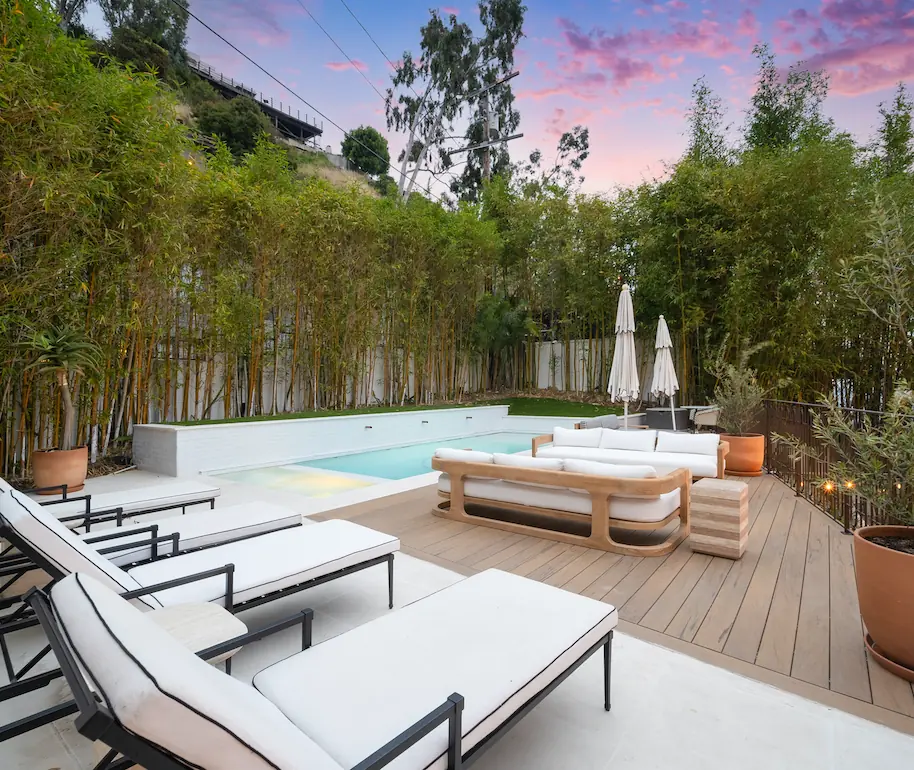As urban landscapes continue to grow more densely populated, the need for innovative ways to incorporate greenery becomes essential. Vertical gardens have emerged as a leading trend in urban landscaping, offering a delightful blend of aesthetic charm and functional enhancement. These green walls are perfect solutions for compact backyards, especially in Southern California, where outdoor spaces can be limited yet ripe for creative design. By embracing vertical gardens, homeowners can enjoy both the beauty of nature and the benefits of enhanced usability in their outdoor environments.
What Are Vertical Gardens?
Vertical gardens, also known as living walls or green facades, are innovative designs where plants are cultivated in a vertical space, often utilizing walls or freestanding structures. They can take various forms, including:
- Freestanding Walls: Independent structures that serve as a focal point in gardens or courtyards.
- Wall-Mounted Systems: Installed directly onto existing walls, these systems often require less space while effectively showcasing plant life.
- Modular Panels or Hydroponic Systems: Designed to accommodate a variety of plants and can be customized for specific aesthetics or environmental needs.
The concept of vertical gardens has evolved significantly in recent years, transitioning from basic greenery to intricate designs that blend art and landscape functionality. Their growing popularity reflects a broader shift toward sustainable and engaging outdoor living.
Benefits of Vertical Gardens
- Space Optimization:
- Vertical gardens provide an ingenious way to maximize greenery in small spaces, allowing homeowners to enjoy lush landscapes even when ground area is limited.
- Improved Air Quality:
- One of the most appealing benefits of green walls lies in their air-purifying qualities. Plants naturally filter pollutants from the air, creating cleaner environments—particularly vital in urban areas wrestling with pollution.
- Thermal and Acoustic Insulation:
- Vertical gardens can act as natural insulators, helping to regulate temperatures and absorb sound. This can contribute to creating a cozy and peaceful outdoor space, even amidst city noise.
- Aesthetic Appeal:
- These living walls add a vibrant, lush feel to hardscaped areas, transforming dull spaces into lively havens. The immediate visual impact can turn an ordinary yard into a stunning retreat.
- Biodiversity Support:
- Incorporating green walls encourages local biodiversity. They attract pollinators like bees, butterflies, and birds, thereby enriching the outdoor ecosystem.
Designing a Vertical Garden for Your Hardscape
- Assessing Your Space:
- Start by evaluating the suitability of your wall or freestanding structure for a vertical garden. Factors such as wall strength, sunlight exposure, and current irrigation setups must be considered for successful installation.
- Choosing the Right Plants:
- For Southern California landscapes, selecting native and drought-tolerant plants is crucial. Ideal options might include succulents, ferns, herbs, flowering plants, and ornamental grasses. Native plants not only thrive in the local climate but also require less water.
- Material Integration:
- Utilize hardscaping materials such as stone, concrete, or wood for structural support. By harmonizing the materials with existing design elements, you can achieve a cohesive look that enhances your overall outdoor aesthetic.
Creative Ways to Incorporate Vertical Gardens
- As a Focal Point:
- Transform a green wall into the centerpiece of your outdoor space, drawing the eye and inviting admiration from guests.
- Privacy Screens:
- Vertical gardens can serve as natural dividers, providing privacy and a serene ambiance, making them fantastic solutions for urban backyards.
- Enhancing Walls and Fences:
- Give plain walls or fences new life by turning them into vibrant living art pieces that captivate the senses.
- Pairing with Water Features:
- Integrating vertical gardens with fountains or small ponds can create a tranquil atmosphere, enhancing the beauty of your outdoor space.
- Integrated Seating Areas:
- Positioning vertical gardens near seating areas creates inviting nooks for relaxation, enabling homeowners to immerse themselves in lush surroundings.
Practical Considerations
- Irrigation Systems:
- Implementing drip irrigation or self-watering systems can significantly reduce maintenance and ensure plants receive adequate hydration without excess effort.
- Structural Support:
- Ensure that walls or frames are designed to support the weight of plants and soil. It’s vital to work with robust materials that can withstand moisture and maintain structural integrity.
- Maintenance:
- Regular care, including pruning, fertilizing, and pest management, is essential for keeping a vertical garden vibrant and healthy. Familiarity with plant needs is crucial to long-term success.
- Longevity:
- Selecting weather-resistant materials to support the green wall’s framework ensures the installation withstands Southern California’s climate, preserving beauty and functionality for years to come.
Vertical Gardens and Sustainability
The role of vertical gardens in sustainable landscaping cannot be overstated. These green structures contribute to reducing urban heat island effects by cooling the surrounding air and offering shade. By incorporating more greenery into hardscape designs, homeowners foster ecological responsibility while enjoying the beauty of nature. Vertical gardens also promote eco-conscious outdoor designs, adding both value to properties and changing perceptions of urban living.
Benefits of Partnering with Professionals
Designing and maintaining vertical gardens can be complex tasks requiring the right expertise. Partnering with professionals, such as MG Construction & Decks, ensures that homeowners enjoy visually stunning and practical solutions. The team can seamlessly integrate hardscaping with greenery while offering design insights tailored to individual preferences and requirements.
Conclusion
Vertical gardens are a transformative solution for enhancing outdoor spaces by seamlessly integrating nature into hardscaping. Not only do they optimize space and improve air quality, but they also contribute significantly to aesthetic value while supporting biodiversity.
If you are considering adding a vertical garden to your home, we invite you to schedule a consultation. Together, let’s explore a personalized vertical garden design that will elevate your outdoor experience and bring your dream space to life!

